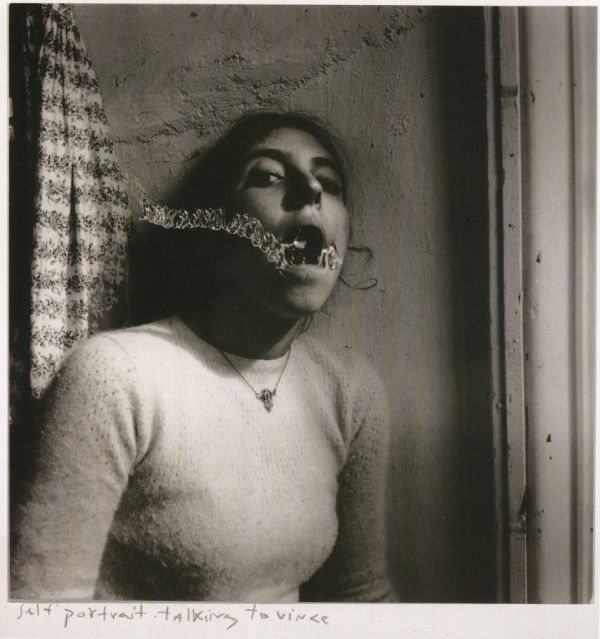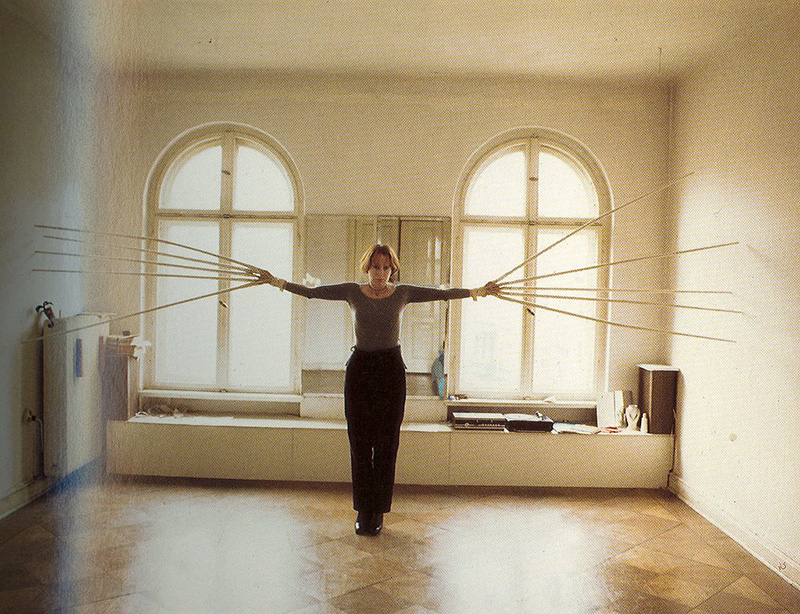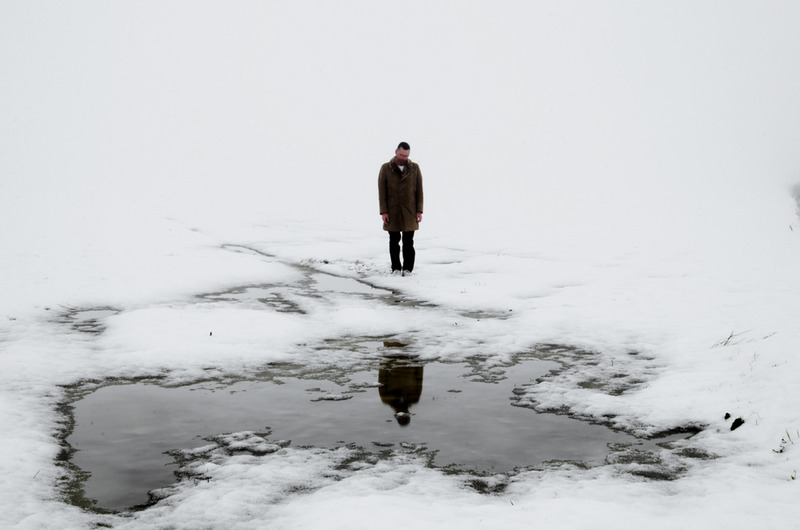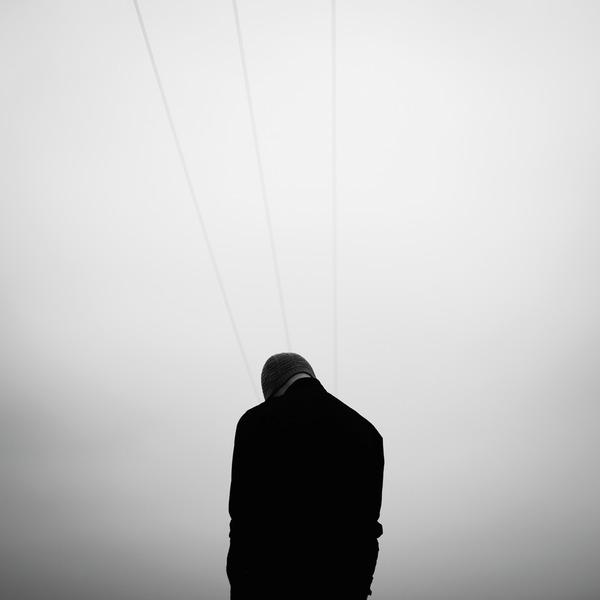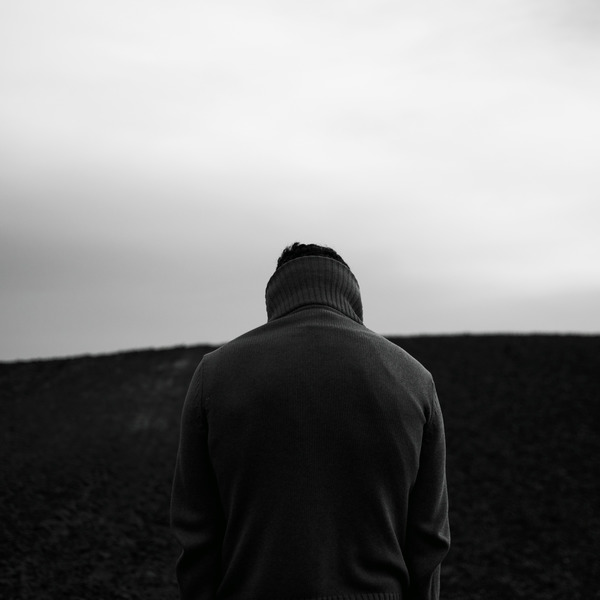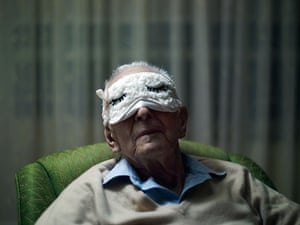This post will outline a critical image analysis of a chosen photograph from Matt Eich’s diaristic project following the journey of his family through their time a time of distress and grief surrounding his parents divorce. It is entitled ‘I Love You, I’m Leaving’ and is one of two parts of my personal study for my coursework; LaToya Ruby Frazier being the other – whom I have already carried out a critical image analysis of.

Describing – FORM – What is here? What am I looking at?
The image above, which I will be analysing in detail, is taken form Matt Eich’s series entitled ‘I Love You, I’m Leaving’. The insightful project follows the life of Matt Eich and his family as he documents, as a photographer, his relationships, as he serves as a father to his children, a husband to his wife and a son to his just divorced parents. It is a poetic and diaristic expression of love and what attachment and detachment can do to a family. Eich, in his statement for the project, taken form (website) expresses that the series was “created during a time of personal domestic unease. I made this work when my parents separated after 33 years of marriage and my wife, children and I had moved to a new city.”
The photograph in question is a very simple yet well executed and elegant image full of character. The image frames one person – and this subject is actually unknown and the only part of the subject’s body that we can see, informing us that it is a photo of realism, is the subjects feet poking out of the bottom of the silk sheet which falls gracefully, and rather ghostly over the shape of the body underneath. Looking at the feet of the subject it looks like it could be a little boy’s feet due to the size of them and the body underneath the cover.
However, observing Eich’s family which is revealed in the rest of the images in the project, their son only looks very young and the size of the body looks more suited to that of the their daughter’s height.
The little girl huddles lonesomely in the corner of her bed underneath a silk sheet which drapes gracefully over her body contours. There is certain glow and glaze which provides body to the image.
It is an image I really like because it is quite eerie in its ghostly state – with the shadow of the feet casting against the wall and the silk texture of the sheet providing a certain glow and shine to the overall look. Furthermore, the head is completely covered under the sheet and the only evidence of a human body is shown in the the feet which hand out the end. The girl is curled up in a semi-ball shape as though she is scared of something. Connotations of ghostliness is reiterated in the relationship between the way she is curled up, huddled under a cover, like a child would when scared, as well as the fact that she, in her own form looks ghostly.
Interpreting – MEANING – What is it about?
Interpreting this image beyond its face value and deeper into the psychological meaning of it, it could mean much more relating to the grief the family may be going through. Eich states that the project was made during a time of personal domestic unease; during a time where the unwelcomed separation of his parents came after 33 years of marriage and, as well, at the inconvenient time at which Eich, their son, had began to create his own family and they were ready to move to a new city to begin their lives elsewhere with his own wife, and three children. The fact that one of the children, whom we don’t know, is tucked away under the blanket, with a deliberate hidden identity may signify that they may feel quite isolated from family life at the moment with the relatives she once knew to be happy and cohesive, now broken and full of upset. Eich reiterates this feeling of unease and makes it clear that it was personal unease but this internal feeling, although tempting to keep in and hide from others, often has to be expressed. This may, in-turn affect the whole family.
Although the little girl may only be playing around with her father as she hides under the sheet in a game of hide-and-seek, it is useful to look further into it to infer and interpret another meaning that could also be realistic. The fact that we cannot see the body underneath the sheet may represent a feeling a lost identity in the new life the family leads. Eich, along with his wife has made the joint decision that it would be best to move away to start a new life, to create more memories with their new-found family. The children likely wouldn’t have got s say in this and the move may have been sprung on them at the last minute. Because of this, it likely that the children may begin to feel a sense of lost identity that the home they once lived in and begin their live sin has now been taken away. I am aware of this feeling from personal experience when I moved from house to house to visit my dad wherever he was staying st the time. After moving out of his, once known home, he had to find a place to live which came as a struggle at the time and as his son, I felt quite confused but found ways to make the most of the new surroundings I found myself in when visiting him.
As a child, you look for a certain spots in your home to act as a den-type area – where you can go to be yourself – to be a kid, sit and do nothing – like I used to – I used to make dens out sofa cushions and find nooks in the house that I could fit into and sit for the fun of it because I was young and my mind had the ability to imagine and wonder off. The image above could represent this same concept – under the sheets on this bed – she may find comfort or enjoyment out of hiding underneath it and it could be her own way of isolating herself from the family to allow herself mental room to imagine, as a kid should.
Evaluating – JUDGEMENT – How good is it?
In my personal opinion, knowing the type of photography I enjoy, I would say that this image is very good and is the exact type of image that attracts me to look at the rest if the series is I was to spot this in an exhibition etc.
Because of it obscurity, I believe that is a very attractive and intriguing image that would draw me in to know more about the photographer as well as the project.
The image would have been taken with a fixed lens in order to get a close to to the subject and the fact that it is black and white adds ot the quality, in my opinion – because it is not heavily reliant on contrasts between heavy blacks and luminant whites and instead focuses on the neutral to provide body to the photograph. Furthermore, there are several leading lines within the photograph; from the feet hanging out the end of the sheet, these lead the audiences eyes along the top of the body, over the legs and to the head which is also under the covers and on centered on a hotspot, if I was to apply the rule of thirds.
As well, I often say this with Eich’s images, each and every one, within this particular project, I believe could work on its own, in solitary from the other images because every one is so powerful and poetic in its expression. This may be why Eich puts only one image to two pages throughout his book because he feels like they would be best appreciated one at a time – as opposed to other photographers who may use two or even three to a page. The size of the images in the small portrait book also reiterate the fact that they are delicate images which hold meaning in more than one way.
Theorizing – CONTEXT – Is it art? How does it relate to the history and theory of photography, art and culture?
Eich’s image capturing this particular moment in time of his daughter’s life at home is an image which works perfectly in his series looking at the fragility of family contrasting its ability to unite a collective of people within the familial circle.
The simplicity that lies within his photography is what makes it so beautiful and captivating because it is the thought behind each and every photo as well as the tones achieved from black and white film – all aspects come together to create meaningful and natural, very organic looking documentary images – and because of this, Eich’s work lends itself to the particular art movement of realism and straight photography because it captures life it most arwwst from – the camera is used as a witness to create memories of intimate moments int time in between the hustle an bustle of daily life – a style of work I enjoy experimenting with in my own projects – the reasons being, for personal reasons and it is the same for any documentary imagery, is that it creates a very truthful and realistic sense of emotion and makes it very easy to tell a story because you are capturing people in their natural forms. Catching people off guard with your lens makes for great results to show a series or a sequence. Eich’s imagery encapsulates the whole meaning of documentary work because it focuses less on post-production and alterations to improve an image an more on the subject and content matte to create a “good” image.
Eich borrows from personal experiences to stimulate his photographic work and his artistic eye – making for a very personal insight into what we, as the audience often tend not to see because it is regarded as personal business to be kept to oneself. The state of acting as a fly-on-the-wall looking in on family life of others, in both Eich and Frazier’s projects is what intrigues the audience, myself included.








